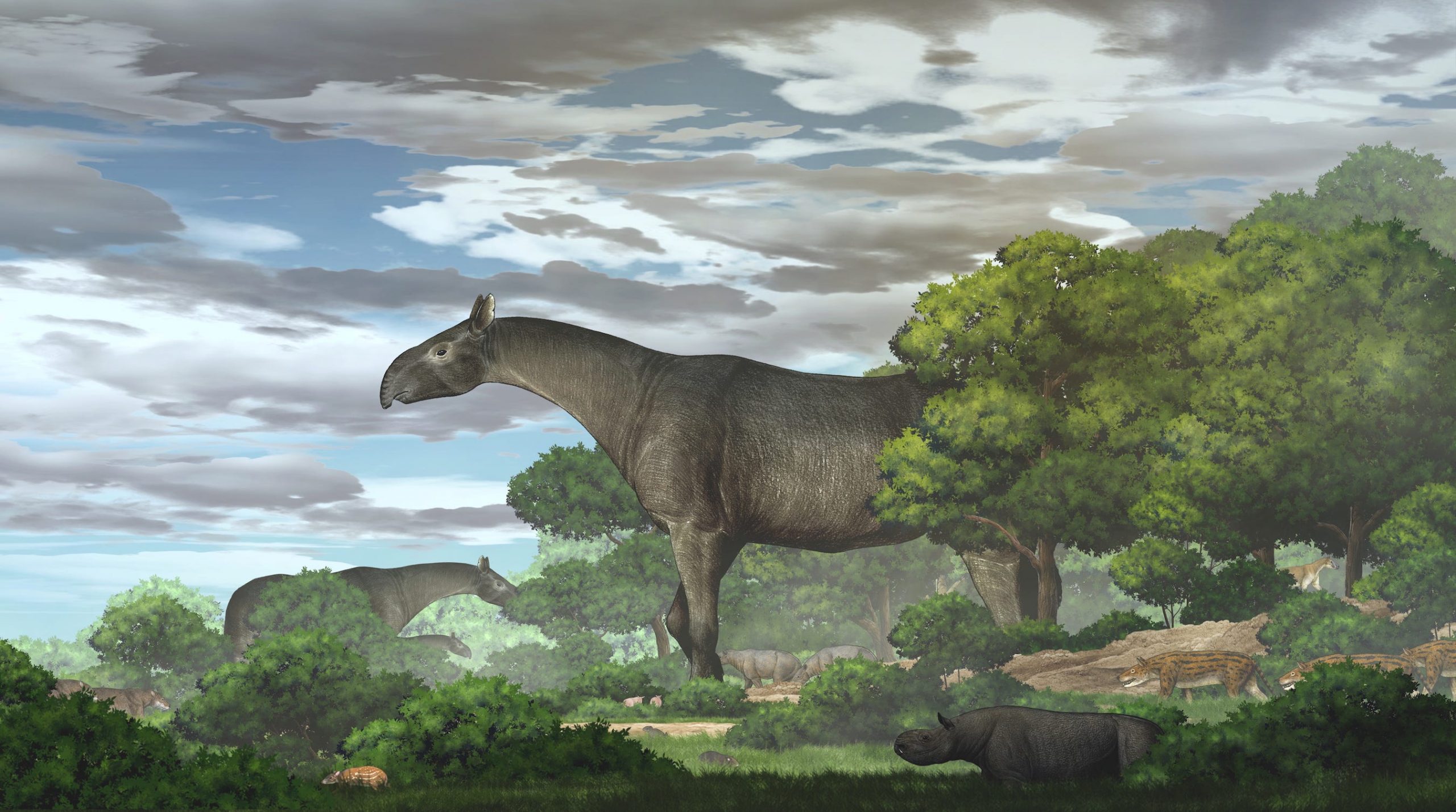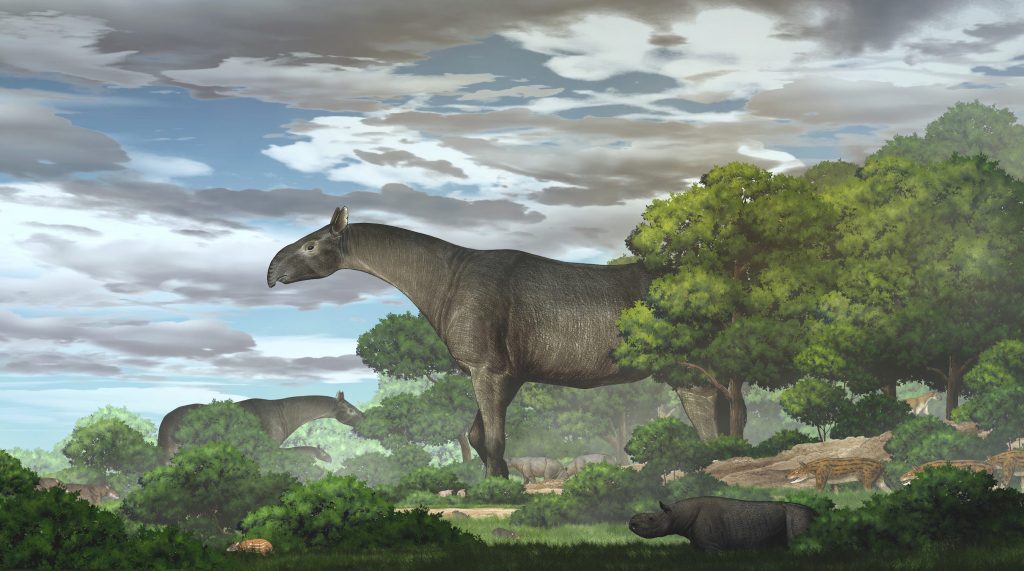
Chen Yu/Institute of Vertebrate Paleontology and Paleoanthropology/Reuters
- Paleontologists have unearthed fossils in China that reveal a new species of giant rhinoceros.
- A three-foot-long skull came from the largest known land mammal – a rhino the size of six elephants.
- The find indicates giant rhinos migrated south, then back north via Tibet, as the climate changed.
- See more stories on Insider's business page.
A batch of newly discovered fossils come from prehistoric giant rhinos – the largest known land mammal in the history of the Earth.
Paleontologists discovered a complete skull from one rhino and three vertebrae from another, in the Linxia basin in the Gansu Province of northwestern China. The set of bones is 26.5 million years old.
Genetic analysis revealed that the fossils belonged to a species of giant rhino that scientists had never seen before. The team of researchers from China and the US dubbed the new animal "Paraceratherium linxiaense."
"Usually fossils come in pieces, but this one is complete, with a very complete skull and a very complete jaw, which is rare," Deng Tao, who led the team that discovered the fossils, told CNN. Deng is a professor at the Institute of Vertebrate Paleontology and Paleoanthropology at the Chinese Academy of Sciences.
Taller than a giraffe and roughly the size of six elephants, the rhino towered 23 feet above the ground, and its body was 26 feet long, Deng told CNN. It weighed roughly 24 tons. The skull was more than three feet long.
"It was very rare for a skull of that size to be preserved," Deng said.
Deng and his colleagues shared their findings in a study published in the journal Communications Biology on Thursday.
A clue to the giant rhinos' mysterious migrations
Scientists already knew about giant rhinos, or Paraceratherium, which have been found across Asia - mainly in Pakistan, Kazakhstan, Mongolia, and China.
But the new species, Paraceratherium linxiaense, shows that these prehistoric pachyderms made huge migrations across the continent.
In the early Oligocene era, 31 million years ago, giant rhinos moved out of the northern Tibetan plateau.
"Animal migration is linked to climate change. So 31 million years ago, when the Mongolian plateau dried up, they moved south," Deng told CNN.
The new species, which is descended from those early migrants, indicates that giant rhinos made the trek back north during the late Oligocene. To get to Linxia, they would have had to cross the Tibetan plateau. According to Deng and his colleagues, this means the plateau must have been much lower than it is today.
"The weather got wet and they went back to the north," Deng said. "Therefore, this discovery is of great significance to the study of the whole plateau-uplift process, climate, and environment."

